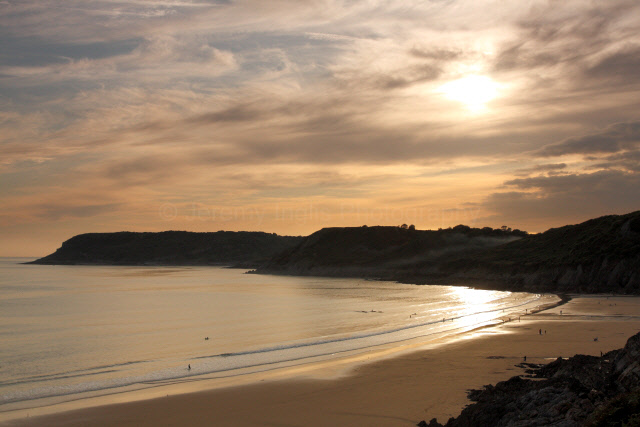I've just come back from a couple of days in Pembrokeshire in west Wales. We had booked a trip to Grassholm on Monday, so decided to while away Sunday with another boat trip, this time to
Skomer Island. Not the ideal time to visit, as most of the breeding seabirds, including the Puffins, had left by the end of July. Also, the Short-eared and Little Owls, which had raised young on the island, had now moved across to the mainland.
Anyhow, as we landed on Skomer, and walked up the landing stage, I looked back to see this Grey Seal bobbing in the water below:
The most obvious and numerous avian inhabitants remaining were the large colony of Lesser Black-backed Gulls:
One of this year's well-grown youngsters:
We walked up towards the buildings at the island's centre, from where we had this view across the swathes of Common Ragwort to St. Brides Bay:
Numerous Swallows were nesting on the old buildings, with this bird perching on a solar heating panel:
We had been told by the warden on arrival that there may still be a single Little Owl around the farm buildings, and perhaps one Short-eared Owl hunting the nearby valley, but all we saw were a few Manx Shearwater corpses, perhaps the victims of the predatory Great Black-backed Gulls:
Continuing onwards to the far side of the island, we arrived at Skomer Head:
From here, we could see the distant form of
Grassholm Island, with its white covering of Gannets:
As we sat down to eat, a Herring Gull appeared, no doubt hoping for some titbits:
We decided to head clockwise around the island, soon arriving at somes steep cliffs opposite the Garland Stone:
We had been told we might see Peregrine Falcons here, but we didn't; the Grey Seals laying on the rocks below having to suffice:
I was able to photograph this Fulmar from above, with the dark sea as a backdrop:
Similarly with this Lesser Black-backed Gull:
We continued our clockwise walk, and eventually ended up back at our starting point for the 3 p.m. boat back to the mainland. Having come at the wrong time of year, it wasn't nearly as wildlife- or photographically-rewarding as
my visit last year, but it was still a nice way to while away a few hours on a pleasant late-summer's day.
Anyway, last (and definitely least!), once back on the mainland, we decided to climb up to the to the Deer Park (the headland overlooking Skomer) for a spot of Chough chasing. Turning round for a moment, I spotted this long-lens brigade pointing their equipment at some bushes near the Martin's Haven car park:
There was obviously a rare bird about, but what? I went down to investigate after an hour or two's Chough chasing, but everyone had gone home by then.
It was not until the next day that a birder told me that the bird in question was a Melodious Warbler, which had been in the area for a week or so. We scanned the area briefly, but couldn't see anything unusual, although we didn't try too hard. I'm not really a 'twitcher', but it would have been nice to see it.
By the way, if anyone knows the identity of those strange creatures pictured above, please name names!

























































